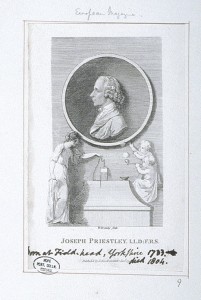A reflection on the Story Makers Project 2013/4
by Helen Edwards
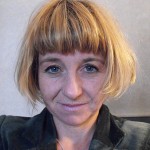 As an Arts Psychotherapist I am constantly fascinated and surprised by ways in which artistic engagement may breathe life into, and make visible, resources and ideas previously dormant. I have been Project Lead for one such initiative, Story Makers, which has been managed by Fusion Arts and funded by Children in Need since its conception. Through Story Makers, arts-based support, in partnership with museums, has been offered to children with speech and language difficulties in Primary Schools in Oxford each year since 2010.
As an Arts Psychotherapist I am constantly fascinated and surprised by ways in which artistic engagement may breathe life into, and make visible, resources and ideas previously dormant. I have been Project Lead for one such initiative, Story Makers, which has been managed by Fusion Arts and funded by Children in Need since its conception. Through Story Makers, arts-based support, in partnership with museums, has been offered to children with speech and language difficulties in Primary Schools in Oxford each year since 2010.
Following on from a partnership with the Ashmolean Museum and then the Pitt Rivers Museum, I was very curious to develop Story Makers to work with the Museum of the History of Science. Having explored the capacities of ideas drawn from dialogues between Art and Archaeology, and Art and Anthropology, to hold, communicate and convey human experiences, I was very drawn to explore how ideas from science could be tapped into too.
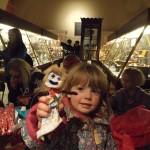 I felt such approaches could help children realise the details and learnt structures of the knowledge they hold about their worlds. Giving attention and thought to the operating of such ways of structuring and expressing their experience of the world, it may be possible to try out new ones, and realise the power of their own creativity and imagination. In my view these are essential tools, transferable to most areas of problem solving.
I felt such approaches could help children realise the details and learnt structures of the knowledge they hold about their worlds. Giving attention and thought to the operating of such ways of structuring and expressing their experience of the world, it may be possible to try out new ones, and realise the power of their own creativity and imagination. In my view these are essential tools, transferable to most areas of problem solving.
The idea for this year’s process – Ways of Measuring and Seeing – emerged through the study of collections in the Museum. I had been considering for a while the ways in which the body learns a sensory map of the world and the incorporation of somatic, body based maps of measuring space. For example, how in the night if one gets up for a glass of water, even in the dark there is an innate knowledge of the number of stairs, length of the hallway, location of a glass and tap, without visual confirmation.
 A felt sense of orientation in the world may underpin and create a sense of balance and security and I felt fascinated to see how this might link with the historical development of anthropomorphic measuring systems – the measuring of the world based on human body parts, such as hands, feet and fathoms, a fathom original being based on the width of a man’s open arms. Discussions with the primary education officer at the Museum, Michelle Holloway, were incredibly fruitful. Together we thought about combining work with measuring instruments in the Museum with activities to support the children’s enquiry.
A felt sense of orientation in the world may underpin and create a sense of balance and security and I felt fascinated to see how this might link with the historical development of anthropomorphic measuring systems – the measuring of the world based on human body parts, such as hands, feet and fathoms, a fathom original being based on the width of a man’s open arms. Discussions with the primary education officer at the Museum, Michelle Holloway, were incredibly fruitful. Together we thought about combining work with measuring instruments in the Museum with activities to support the children’s enquiry.
The children ranged from excited to very concerned about their visits to the Museum. Some had visited either with family, or with school groups, whereas others had never visited. For them, this was going into a land of the unknown, this external journey representing the border they were crossing internally, a big leap of faith for both children and adults. The project was both personally and artistically exciting and challenging, shepherding and heralding new ideas as they arrived, encouraging the new inventors to breathe belief into their ideas.
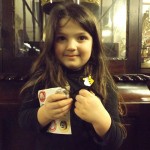 The huge, light spaces of the museum galleries were so different to many of the small classrooms and buildings more familiar to these groups. The fragile glass cases and many beautiful, old instruments and devices, so carefully crafted by their makers, echoed the new ideas emerging from these developing children. The children had questions about these makers in their endeavour to try and understand the social and emotional nature of their lives. Each Story Maker participant drew from and built on ideas from their imagination, and the process of working with the Museum lead to an extraordinary collection of new characters of invention, with their own unique stories, communicating new understanding and awareness of their worlds and innate creativity.
The huge, light spaces of the museum galleries were so different to many of the small classrooms and buildings more familiar to these groups. The fragile glass cases and many beautiful, old instruments and devices, so carefully crafted by their makers, echoed the new ideas emerging from these developing children. The children had questions about these makers in their endeavour to try and understand the social and emotional nature of their lives. Each Story Maker participant drew from and built on ideas from their imagination, and the process of working with the Museum lead to an extraordinary collection of new characters of invention, with their own unique stories, communicating new understanding and awareness of their worlds and innate creativity.

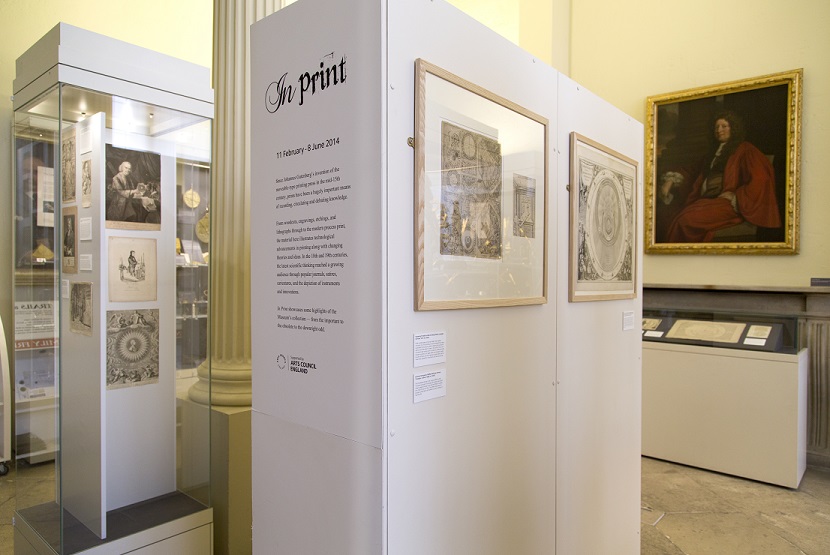

 As an Arts Psychotherapist I am constantly fascinated and surprised by ways in which artistic engagement may breathe life into, and make visible, resources and ideas previously dormant. I have been Project Lead for one such initiative, Story Makers, which has been managed by Fusion Arts and funded by Children in Need since its conception. Through Story Makers, arts-based support, in partnership with museums, has been offered to children with speech and language difficulties in Primary Schools in Oxford each year since 2010.
As an Arts Psychotherapist I am constantly fascinated and surprised by ways in which artistic engagement may breathe life into, and make visible, resources and ideas previously dormant. I have been Project Lead for one such initiative, Story Makers, which has been managed by Fusion Arts and funded by Children in Need since its conception. Through Story Makers, arts-based support, in partnership with museums, has been offered to children with speech and language difficulties in Primary Schools in Oxford each year since 2010. I felt such approaches could help children realise the details and learnt structures of the knowledge they hold about their worlds. Giving attention and thought to the operating of such ways of structuring and expressing their experience of the world, it may be possible to try out new ones, and realise the power of their own creativity and imagination. In my view these are essential tools, transferable to most areas of problem solving.
I felt such approaches could help children realise the details and learnt structures of the knowledge they hold about their worlds. Giving attention and thought to the operating of such ways of structuring and expressing their experience of the world, it may be possible to try out new ones, and realise the power of their own creativity and imagination. In my view these are essential tools, transferable to most areas of problem solving. A felt sense of orientation in the world may underpin and create a sense of balance and security and I felt fascinated to see how this might link with the historical development of anthropomorphic measuring systems – the measuring of the world based on human body parts, such as hands, feet and fathoms, a fathom original being based on the width of a man’s open arms. Discussions with the primary education officer at the Museum, Michelle Holloway, were incredibly fruitful. Together we thought about combining work with measuring instruments in the Museum with activities to support the children’s enquiry.
A felt sense of orientation in the world may underpin and create a sense of balance and security and I felt fascinated to see how this might link with the historical development of anthropomorphic measuring systems – the measuring of the world based on human body parts, such as hands, feet and fathoms, a fathom original being based on the width of a man’s open arms. Discussions with the primary education officer at the Museum, Michelle Holloway, were incredibly fruitful. Together we thought about combining work with measuring instruments in the Museum with activities to support the children’s enquiry. The huge, light spaces of the museum galleries were so different to many of the small classrooms and buildings more familiar to these groups. The fragile glass cases and many beautiful, old instruments and devices, so carefully crafted by their makers, echoed the new ideas emerging from these developing children. The children had questions about these makers in their endeavour to try and understand the social and emotional nature of their lives. Each Story Maker participant drew from and built on ideas from their imagination, and the process of working with the Museum lead to an extraordinary collection of new characters of invention, with their own unique stories, communicating new understanding and awareness of their worlds and innate creativity.
The huge, light spaces of the museum galleries were so different to many of the small classrooms and buildings more familiar to these groups. The fragile glass cases and many beautiful, old instruments and devices, so carefully crafted by their makers, echoed the new ideas emerging from these developing children. The children had questions about these makers in their endeavour to try and understand the social and emotional nature of their lives. Each Story Maker participant drew from and built on ideas from their imagination, and the process of working with the Museum lead to an extraordinary collection of new characters of invention, with their own unique stories, communicating new understanding and awareness of their worlds and innate creativity.
